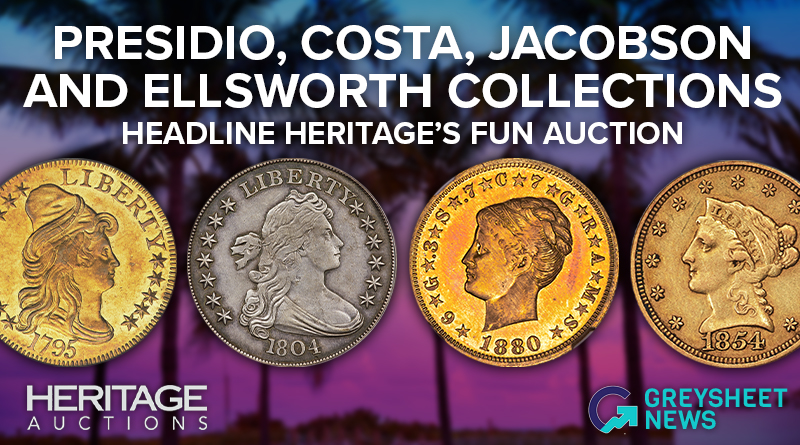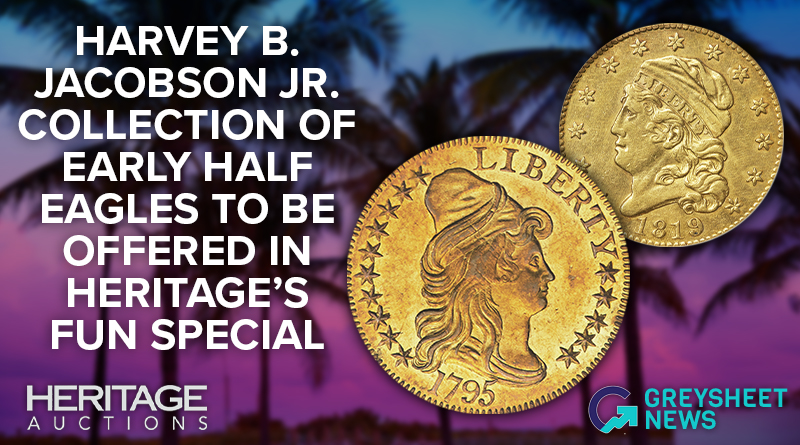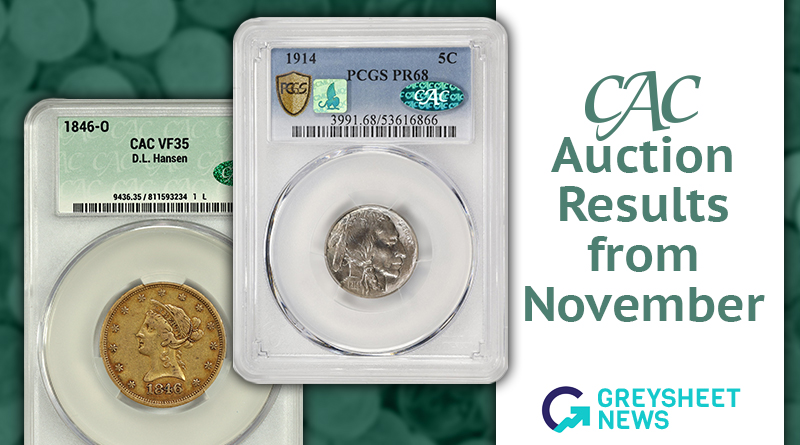Greysheet & CPG® PRICE GUIDE
- U.S. Coins /
- Pattern Coinage /
-
1839 Pattern Values
Year
Sort by
About This Series
History and Overview
Patterns for the year 1839 parallel those of 1838. They are comprised of half dollars and silver dollars, each in different die combinations. Originals and restrikes both exist, with a general rule of thumb that half dollars weighing approximately 206 grains are original and those weighing approximately 192 grains, consistent with the Act of February 21, 1853, reducing the weight, are restrikes. The latter are believed to have been first made in 1859, a scenario similar to that for pattern halves of 1838. Often, actual specimens do not neatly fit into either weight category but are close to them.
One distinctly new half dollar die was introduced: its design featured Liberty facing right, with LIBERTY on the coronet, similar to the portrait used on contemporary $10 gold coins, except facing in the other direction. It is unusual to see the word LIBERTY begin near the back of the head, a departure from standard procedure. Neither this die nor any like it were ever used for coinage.
Similar to the situation for 1838-dated pattern half dollars, those of the same denomination in 1839 consist of combinations of several different obverses and reverses, the reverses including some that had been used for 1838-dated pieces.
Half Dollar Obverse Dies of 1839
Obverse 1: “Coronet Head facing right.” Gobrecht’s Coronet or Braided Hair head, facing right, with the word LIBERTY beginning above the ear and ending with the Y above the forehead, an arrangement much different from any Liberty Head ever used on any coinage. 13 stars around, date below. • Used with J-91 to J-98.
Obverse 2: “Regular Capped Bust die.” Regular Capped Bust die of the year as employed on circulating coinage. • Used with J-99 and J-100.
Obverse 3: “Regular Liberty Seated, With Drapery die.” Regular Liberty Seated half dollar die as used later in the year for circulating coinage, of the style with drapery at the elbow. • Used with J-101 to J-103.
The reverse motifs employed for the 1839 pattern half dollar coinage are several, a mixture of those used in 1838 with certain regular-issue dies. Those dies used in 1838 are listed first, Reverse A and B, with the same letter designations as employed in 1838.
Half Dollar Reverse Dies of 1839
Reverse A: “Perched eagle holding four arrows.” Perched eagle holding olive branch and four arrows, head turned toward viewer’s right. UNITED STATES OF AMERICA above, HALF DOLLAR below. • Same as Reverse A of 1838. • Used for restrikes J-99, J-101.
Reverse B: “Flying eagle in plain field.” Eagle flying to the left, mouth open, neck feathers somewhat ruffled. UNITED STATES OF AMERICA above, HALF DOLLAR below. • Same as Reverse B of 1838. • Used for restrikes J-91, J-92, J-100, J-102.
Reverse C: “Regular reverse die, Small Letters.” Regular reverse die used on Liberty Seated half dollars made for circulation, Small Letters. • Used for originals J-93, J-94.
Reverse D: “Regular reverse die, Medium Letters.” Regular reverse die used in this era, Medium Letters. • Used for restrikes J-95, J-96, J-103.
Reverse E: “Regular reverse die, Large Letters.” Regular reverse die used 1842 and later, Large Letters. • Used for restrikes J-97, J-98.
The preceding dies occur in several combinations in both original productions (contemporary with 1838, these limited to J-93 and J-94) and restrikes (1859 or later, most likely in the 1870s14). Likely, the originals are of approximately 206 grains weight, this being the standard for a half dollar planchet prior to the Act of February 21, 1853, at which time the weight was reduced to 192 grains. When restrikes were made at the Mint, current planchets were used, these being of the lighter weight.
The silver dollars essentially parallel the die combinations of 1838. The obverse die, with stars, is dated 1839. Varieties exist with the eagle in a plain field as well as a starry field. Coinage records state that 300 examples were made with a plain reverse, these being struck for circulation (J-104), now known to have been in alignment IV from perfect dies.
In 1839 a dollar of the same type as the pattern dollar of the previous year was struck. The Director’s Report of that time states that 300 of these were coined but we have been unable to find any memorandum to that effect in any of the Mint records, where it should properly appear if such were the case. They are not as rare as the dollars of 1838, and the coinage was probably more extensive.
Collecting Perspective
Similar to the pattern half dollar and dollars of 1838, those dated 1839 range from rare to extremely rare. Likewise, those of 1839 can never be collected in their entirety, but the goal of obtaining an example of each die is a reasonable challenge.
In addition to the pattern half dollar dies, a regular 1839 Capped Bust obverse was used this year and also employed was a regular 1839 Liberty Seated half dollar (of the second Liberty Seated style of 1839, with drapery at the elbow).15
The 1839 Gobrecht dollars are in demand by pattern collectors and even more so by those who are not pattern specialists, but who are attracted to the listings in A Guide Book of United States Coins. The variety usually seen is that with the reverse in a plain field, reeded edge, certain examples of which are regular issues. As such, they are of extraordinary importance. See “Die Alignments of Gobrecht Dollars” under the 1836 listing above.
Catalog Detail
Legal Disclaimer
The prices listed in our database are intended to be used as an indication only. Users are strongly encouraged to seek multiple sources of pricing before making a final determination of value. CDN Publishing is not responsible for typographical or database-related errors. Your use of this site indicates full acceptance of these terms.












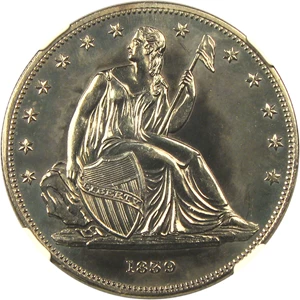






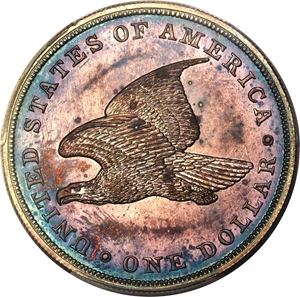

From the Greysheet Marketplace
Buy Now: $3,695.00
Buy Now: $2,890.63
Buy Now: $120,000.00
Buy Now: $38,900.00
Buy Now: $5,500.00
Buy Now: $37,000.00
Buy Now: $3,121.88
Buy Now: $37,000.00
Buy Now: $31,500.00
Buy Now: $125,000.00
Related Stories (powered by Greysheet News)
View all news
Greysheet Catalog Details
History and Overview
Patterns for the year 1839 parallel those of 1838. They are comprised of half dollars and silver dollars, each in different die combinations. Originals and restrikes both exist, with a general rule of thumb that half dollars weighing approximately 206 grains are original and those weighing approximately 192 grains, consistent with the Act of February 21, 1853, reducing the weight, are restrikes. The latter are believed to have been first made in 1859, a scenario similar to that for pattern halves of 1838. Often, actual specimens do not neatly fit into either weight category but are close to them.
One distinctly new half dollar die was introduced: its design featured Liberty facing right, with LIBERTY on the coronet, similar to the portrait used on contemporary $10 gold coins, except facing in the other direction. It is unusual to see the word LIBERTY begin near the back of the head, a departure from standard procedure. Neither this die nor any like it were ever used for coinage.
Similar to the situation for 1838-dated pattern half dollars, those of the same denomination in 1839 consist of combinations of several different obverses and reverses, the reverses including some that had been used for 1838-dated pieces.
Half Dollar Obverse Dies of 1839
Obverse 1: “Coronet Head facing right.” Gobrecht’s Coronet or Braided Hair head, facing right, with the word LIBERTY beginning above the ear and ending with the Y above the forehead, an arrangement much different from any Liberty Head ever used on any coinage. 13 stars around, date below. • Used with J-91 to J-98.
Obverse 2: “Regular Capped Bust die.” Regular Capped Bust die of the year as employed on circulating coinage. • Used with J-99 and J-100.
Obverse 3: “Regular Liberty Seated, With Drapery die.” Regular Liberty Seated half dollar die as used later in the year for circulating coinage, of the style with drapery at the elbow. • Used with J-101 to J-103.
The reverse motifs employed for the 1839 pattern half dollar coinage are several, a mixture of those used in 1838 with certain regular-issue dies. Those dies used in 1838 are listed first, Reverse A and B, with the same letter designations as employed in 1838.
Half Dollar Reverse Dies of 1839
Reverse A: “Perched eagle holding four arrows.” Perched eagle holding olive branch and four arrows, head turned toward viewer’s right. UNITED STATES OF AMERICA above, HALF DOLLAR below. • Same as Reverse A of 1838. • Used for restrikes J-99, J-101.
Reverse B: “Flying eagle in plain field.” Eagle flying to the left, mouth open, neck feathers somewhat ruffled. UNITED STATES OF AMERICA above, HALF DOLLAR below. • Same as Reverse B of 1838. • Used for restrikes J-91, J-92, J-100, J-102.
Reverse C: “Regular reverse die, Small Letters.” Regular reverse die used on Liberty Seated half dollars made for circulation, Small Letters. • Used for originals J-93, J-94.
Reverse D: “Regular reverse die, Medium Letters.” Regular reverse die used in this era, Medium Letters. • Used for restrikes J-95, J-96, J-103.
Reverse E: “Regular reverse die, Large Letters.” Regular reverse die used 1842 and later, Large Letters. • Used for restrikes J-97, J-98.
The preceding dies occur in several combinations in both original productions (contemporary with 1838, these limited to J-93 and J-94) and restrikes (1859 or later, most likely in the 1870s14). Likely, the originals are of approximately 206 grains weight, this being the standard for a half dollar planchet prior to the Act of February 21, 1853, at which time the weight was reduced to 192 grains. When restrikes were made at the Mint, current planchets were used, these being of the lighter weight.
The silver dollars essentially parallel the die combinations of 1838. The obverse die, with stars, is dated 1839. Varieties exist with the eagle in a plain field as well as a starry field. Coinage records state that 300 examples were made with a plain reverse, these being struck for circulation (J-104), now known to have been in alignment IV from perfect dies.
In 1839 a dollar of the same type as the pattern dollar of the previous year was struck. The Director’s Report of that time states that 300 of these were coined but we have been unable to find any memorandum to that effect in any of the Mint records, where it should properly appear if such were the case. They are not as rare as the dollars of 1838, and the coinage was probably more extensive.
Collecting Perspective
Similar to the pattern half dollar and dollars of 1838, those dated 1839 range from rare to extremely rare. Likewise, those of 1839 can never be collected in their entirety, but the goal of obtaining an example of each die is a reasonable challenge.
In addition to the pattern half dollar dies, a regular 1839 Capped Bust obverse was used this year and also employed was a regular 1839 Liberty Seated half dollar (of the second Liberty Seated style of 1839, with drapery at the elbow).15
The 1839 Gobrecht dollars are in demand by pattern collectors and even more so by those who are not pattern specialists, but who are attracted to the listings in A Guide Book of United States Coins. The variety usually seen is that with the reverse in a plain field, reeded edge, certain examples of which are regular issues. As such, they are of extraordinary importance. See “Die Alignments of Gobrecht Dollars” under the 1836 listing above.
Catalog Detail
Legal Disclaimer
The prices listed in our database are intended to be used as an indication only. Users are strongly encouraged to seek multiple sources of pricing before making a final determination of value. CDN Publishing is not responsible for typographical or database-related errors. Your use of this site indicates full acceptance of these terms.



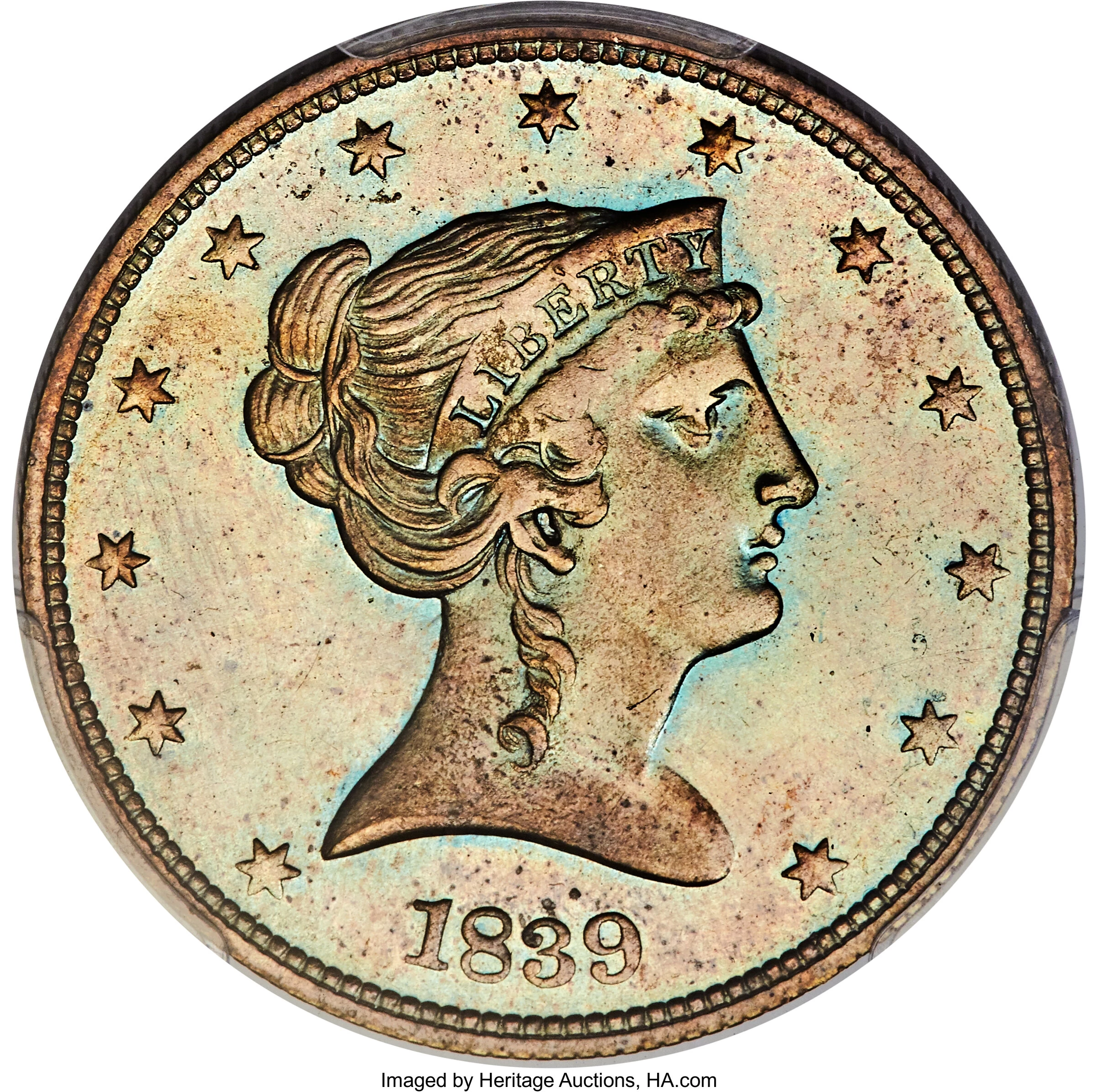






 Loading more ...
Loading more ...









